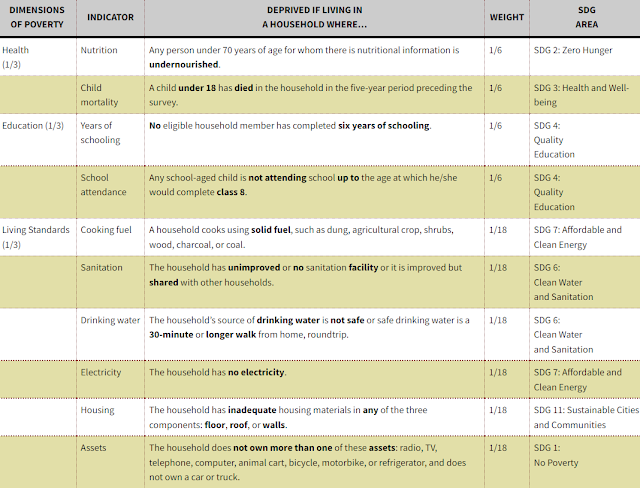National Family Health Survey-5 the state level data: Let’s play with some indices: Part 1

NFHS-5 data at the state level is now available for all states. Taking various ideas and indices altogether, let’s talk in the more easy way, who progressed and who didn’t. Whenever one talks about development, the first index that comes to mind is Human Development Index. The human development index has three main indicators: health (Life expectancy index), education (expected years of schooling and mean years of schooling), and income (per capita gross national income (PPP)). This covers the main important pillars. While the Human development index measures development, there are other indices like the multi-dimensional poverty index which measures poverty. Global Multidimensional Poverty Index, given by Oxford Poverty and Human Development Initiative, has 10 indicators. Table no.1 gives more details. Table no.1 Source: https://ophi.org.uk/multidimensional-poverty-index/ While Human Development Index can easily be constructed at the state level, the multidimensional poverty ind

